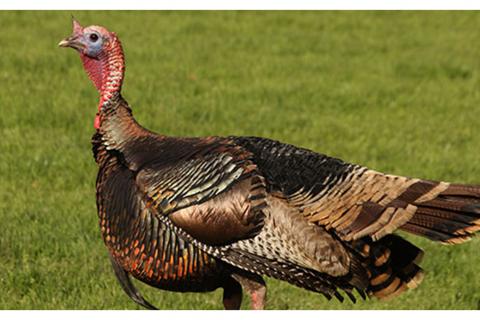
Thunder chicken, hammerhead, boss tom and Mr. Waddles, are just some of the slang terms turkey hunters give to old, mature gobblers. One thing turkey hunters don’t lack is an imagination and the ability to have fun.
Mossback is another term you’ll hear, referring to an old tom that’s alluded hunters for years, living in deep, dark forests so wet, the bird has moss growing on its back.
Geography, as much as ingenuity, plays a role in what slang terms are assigned to a turkey.
When you do put down a big tom, check out those spurs. If the spurs are long and curved, curved enough that the bird can be hung by them on a small diameter tree limb, you just got yourself a #treehanger.
The older the tom, the more likely it is to be a #bosstom, or #longbeard, common hashtags you’ll find on various social media streams. #BTD can stand for either Big Tom Down, or, Boss Tom Down, as well as other things, non-turkey hunting related.
If you enjoy looking at turkey photos, both live birds and birds taken by hunters–, heck out #turkeyhunting, #turkeyhunt, #turkeyseason, and just about anything else #turkey related that you can think of. Heck, you might even coin your own turkey hashtag this season!
A turkey’s head carries plenty of adornments, and yes, they all have names.
The flap beneath the chin is the dewlap, just like the dewlap on a Brahma bull, only smaller.
The sometimes elongated appendage that drapes over the beak of a tom is called the snood. In spring, the snood is highly visible and can go from being relaxed and four-inches long to short and sitting atop the beak in a couple seconds. Hens also have a lesser version of the snood, and a select few can also carry beards.
But wait, there’s more.
The small, wart-like appendages scattered about the back of the head and neck of both toms and hens, are known as the minor caruncles. These change color and size with the changing seasons and hormone levels, in both toms and hens.
The bulbous lobes of skin at the base of a tom’s neck that turn fire engine red in breeding season, are referred to as the waddles or caruncles.
Atop a very mature tom’s head is what’s referred to as the white crown. This often appears slightly concave due to the loose, raised skin surrounding it. Combine this white patch with the brilliant blue cheeks and cherry red neck, and you get the patriotic colored head that epitomizes toms of spring.
No matter what you call a turkey, or what hashtag you give it when making a social media post, there’s no doubting it’s all about having fun.
After all, that’s what hunting is about: having fun, enjoying nature, coming away with great eating meat and memories to last a lifetime of chasing #springthunder!
- 14684 views

